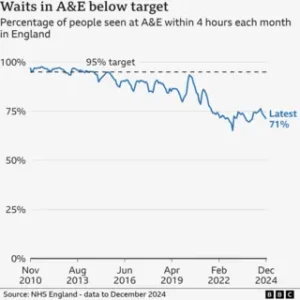Investing Strategies for a Volatile Market

SmartAsset and Yahoo Finance LLC may earn commission or revenue through links in the content below.
Market volatility refers to rapid and significant price changes, which can cause anxiety for investors but also create opportunities for growth. Learning how to manage volatility and adjusting your investment approach during uncertain times can help protect your portfolio and position you to take advantage of price swings. A financial advisor could also work with you to prepare for and hedge against market volatility.
Market volatility refers to the rate at which the price of securities increases or decreases for a given set of returns. It is often measured by the standard deviation of returns and is a key indicator of risk in financial markets.
When volatility is said to be high, it means that the price of an asset can change dramatically over a short period. The change can be either higher or lower. Naturally, this sort of environment can impact investment decisions and portfolio management strategies.
Factors contributing to market volatility include geopolitical events and changes in economic indicators or market sentiment. Reports on employment figures, inflation rates and GDP growth can influence investor perceptions and lead to rapid price changes.
Geopolitical tensions, natural disasters and global health crises can create uncertainty and cause unpredictable market reactions. Changes in investor sentiment, driven by fear or optimism, can also increase buying or selling, adding to market volatility.
While market volatility can offer opportunities for profit through well-timed buying and selling, it also comes with risks. Investors with low risk tolerance may find these periods challenging, as sharp price swings can result in significant short-term losses.
For long-term investors, volatility is often seen as a normal part of investing. Staying focused on investment goals and maintaining a steady approach can help manage the impact of these fluctuations over time.

Risk is the potential for an investment to result in a loss. It encompasses a spectrum of factors, including market risk, credit risk and liquidity risk among others. While volatility can contribute to risk by making returns less predictable, risk itself is more about the likelihood of an adverse outcome.
To effectively manage risk in volatile markets, investors focus on diversifying and acquiring a clear understanding of their own risk tolerance. Diversification involves spreading investments across various asset classes to reduce exposure to any single asset’s volatility.
Another way to mitigate the impact of market fluctuations is to have a well-defined investment strategy that aligns with your financial objectives and risk appetite. Consulting with a financial advisor can provide valuable insights and strategies tailored to your specific needs.
Your investment time horizon plays a significant role in how you perceive and manage volatility and risk. Short-term investors may feel the effects of market swings more sharply, while long-term investors often have the ability to ride out downturns and recover over time.
Hedging against volatility can help you protect your portfolio during periods of market uncertainty. You can do this by combining strategies that reduce risk and stabilize your portfolio during market fluctuations. These could include:
-
Diversification across asset classes: You can reduce risk by diversifying your investment portfolio across various asset classes, such as stocks, bonds and real estate. This lessens the impact of a downturn in any single asset class on your overall portfolio.
-
Use derivatives for protection: Options and futures contracts can be used to hedge against potential losses in your portfolio by locking in prices and setting limits on losses.
-
Invest in defensive stocks: Defensive stocks, such as utilities and consumer staples, tend to perform well during economic downturns. These companies provide essential goods and services, making them less susceptible to market volatility.
-
Add gold and precious metals: Gold and other precious metals often retain value during economic uncertainty. Including these in your portfolio can act as a hedge against inflation and currency fluctuations.
-
Explore international markets: Investing in international markets can provide exposure to different economic cycles and growth opportunities. This strategy can help offset the effects of volatile domestic markets and boost portfolio resilience.

While volatility can be unsettling, it can also create opportunities for investors who are prepared. Therefore, understanding how volatility works could help position you to avoid impulsive decisions, especially during market swings. Diversification is a key strategy for managing volatility, and maintaining a long-term perspective could allow you to focus on growth.
-
A financial advisor can help you analyze investments and manage risk for your portfolio. Finding a financial advisor doesn’t have to be hard. SmartAsset’s free tool matches you with up to three vetted financial advisors who serve your area, and you can have a free introductory call with your advisor matches to decide which one you feel is right for you. If you’re ready to find an advisor who can help you achieve your financial goals, get started now.
-
If you want to know how much you could pay in taxes for the sale on an investment, SmartAsset’s capital gains calculator can help you get an estimate.
Photo credit: ©iStock.com/ArLawKa AungTun, ©iStock.com/wsfurlan, ©iStock.com/shapecharge
The post Investing Strategies for a Volatile Market appeared first on SmartReads by SmartAsset.








